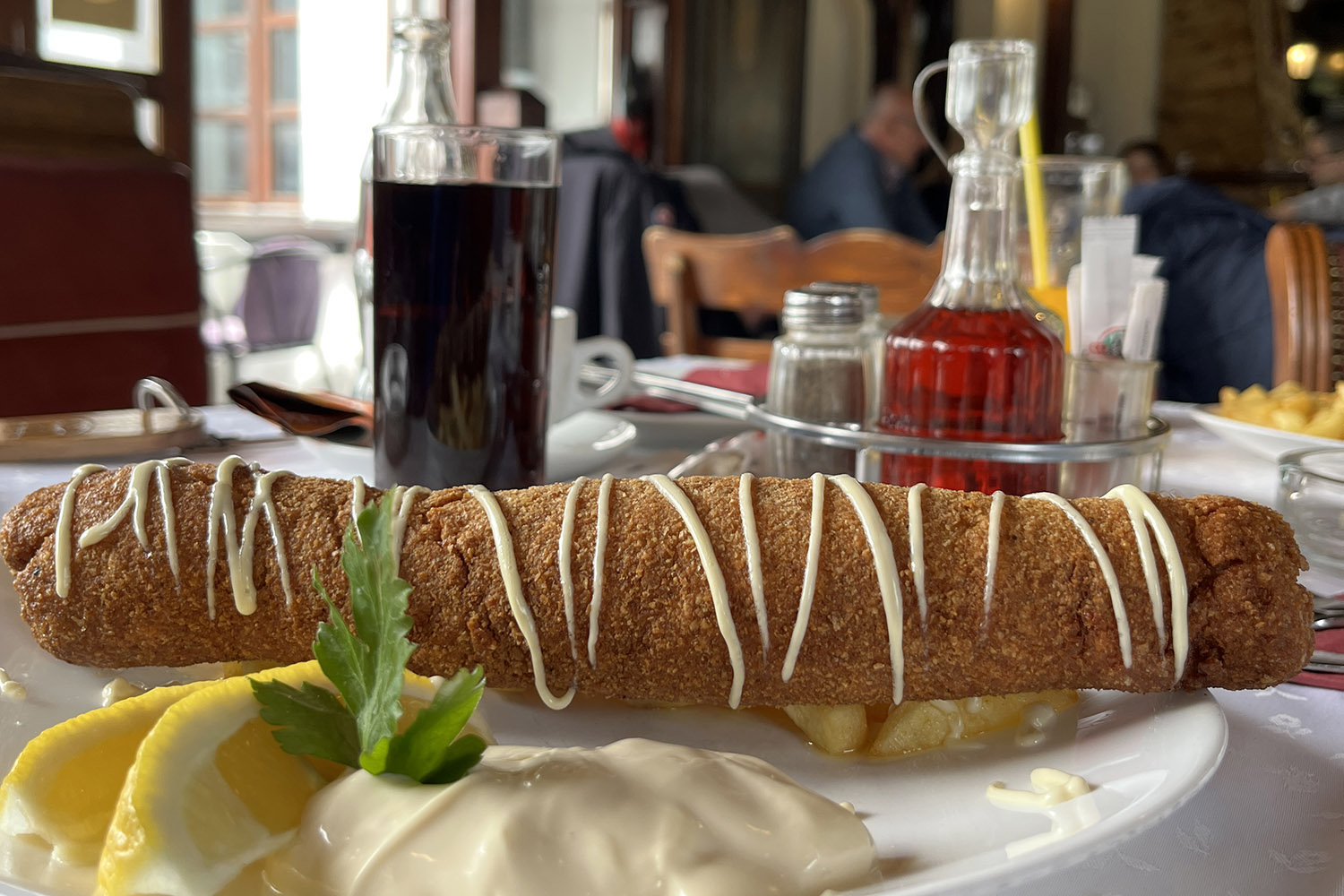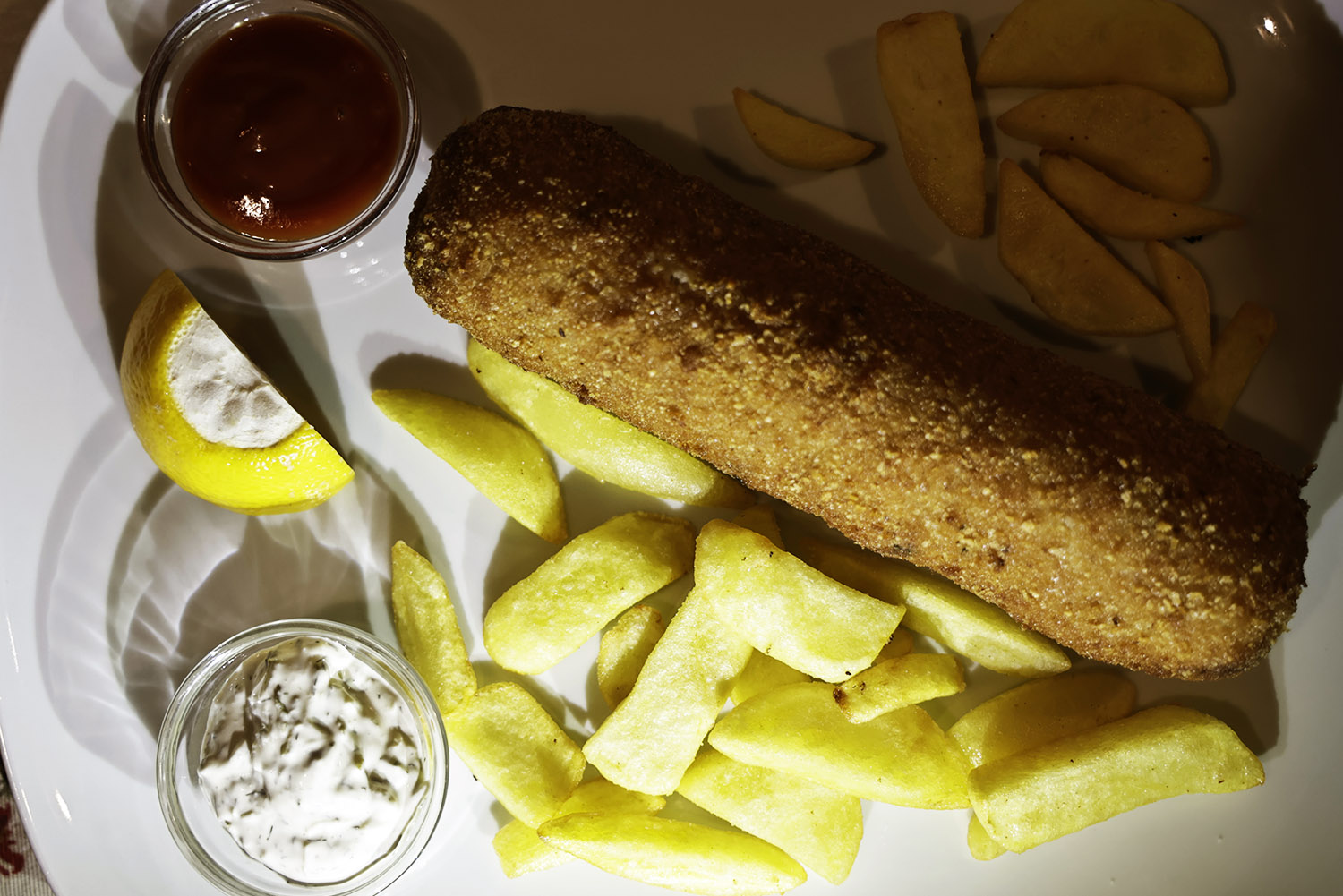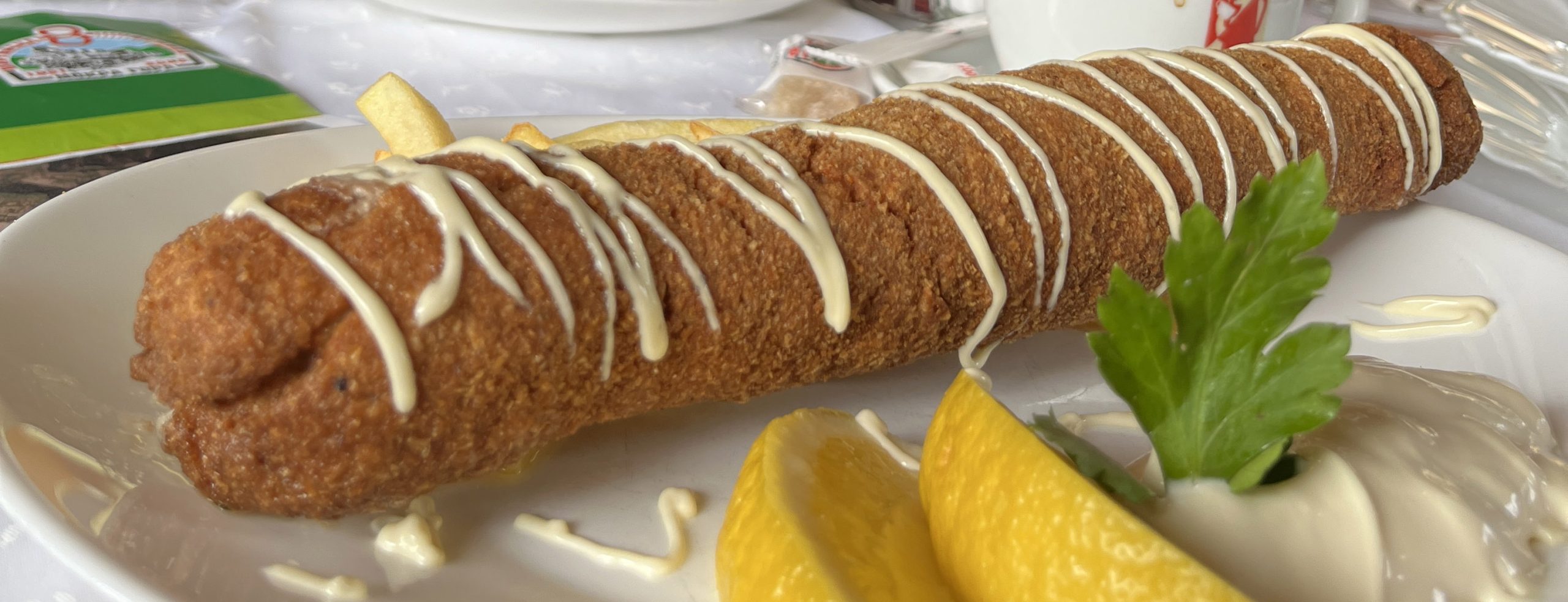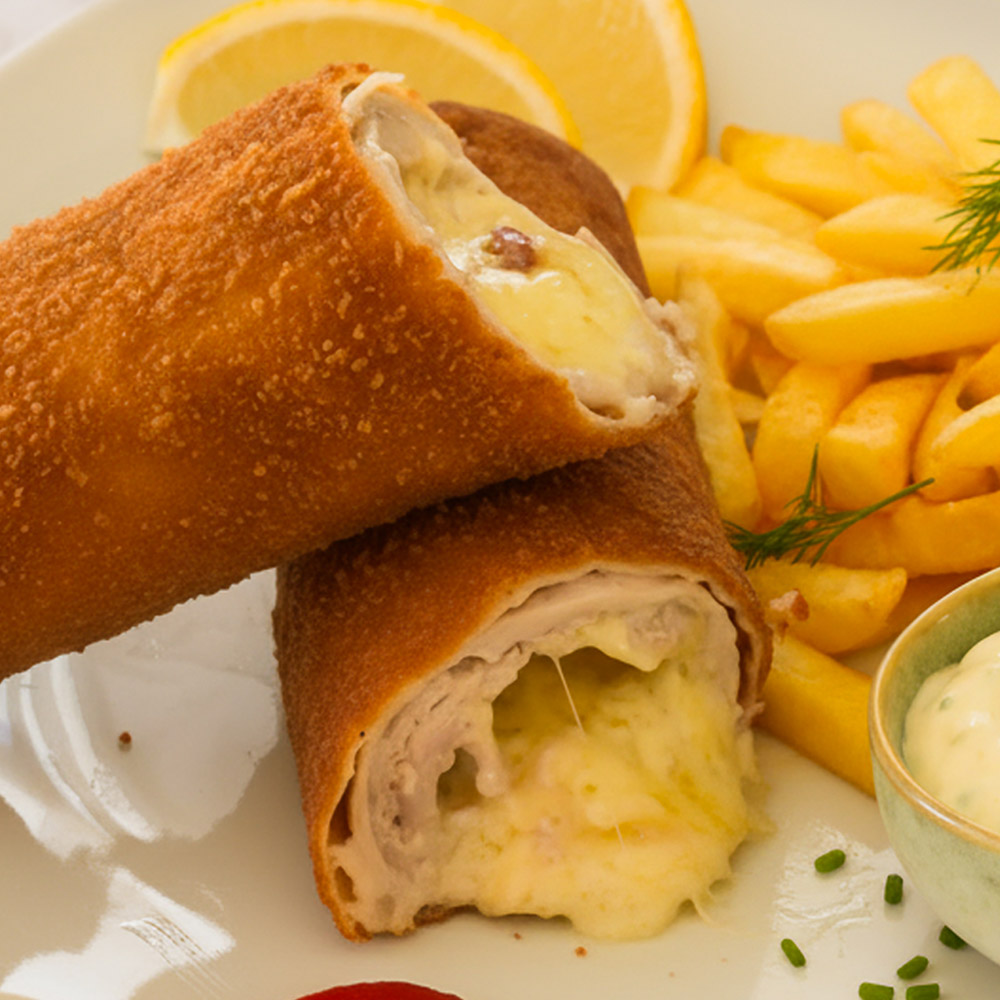How an accident became a legend: Mića, the “Golf,” and the Kiev that got away
In Belgrade of the 1950s, when waiters knew their regulars by name and chefs guarded the secrets of their stoves, a dish was born in the restaurant “Golf” that would conquer an entire nation. Milovan Mića Stojanović, then a young kitchen prodigy, ran out of the key ingredients for his regular guest’s favorite Chicken Kiev. Instead of giving up, he improvised: a thin schnitzel, carefully spread with kaymak (a rich clotted cream), rolled up like a pancake, coated in flour, eggs, and breadcrumbs, then lowered into hot oil. The result was a crispy golden spiral with a soft, milky heart. It is said to have appeared in 1956 and was immediately named after Karađorđe, for it looked proud and heroic. In the spirit of bohemian humor, it soon earned a playful nickname—The Maiden’s Dream—always served with a smile and a raised eyebrow.

From the Marshal’s table to every good tavern’s menu
Mića soon became the head chef of Josip Broz Tito himself, and the schnitzel entered culinary legend not only for its taste but also for the story of its creator. When a dish appears both in presidential salons and in smoky taverns, you can be sure it has crossed every social border. Today, hardly a Serbian restaurant exists without Karađorđe’s on the menu—from city hotels to leafy courtyards—and in Skadarlija it’s welcomed like an old friend, served with fries, lemon, and the indispensable tartar sauce. A short stroll down the cobblestones and a peek at the menus of the famed houses will tell you everything: this dish has become an institution of Belgrade dining.

Karađorđe’s schnitzel is as simple as a good story and as layered as a good song. It can be made from veal or pork, but what gives it soul is the kaymak—melting like snow under a March sun. The schnitzel is rolled tightly to hold its breath and juices, breaded to a silky crumb, and fried until it crackles outside and stays tender within. It arrives on the plate with lemon that awakens the kaymak, tartar that converses with the crust, and a side that doesn’t steal the scene but keeps the rhythm—most often, fries. In that small choreography of flavors lies the reason why foreign guests, once they learn to say “Karađorđeva,” immediately ask for seconds.
The secret lies in the singing kaymak and the whispering crust

Why it still wins us over: nostalgia, flavor, and a dash of charm
Everyone remembers their first Karađorđe’s schnitzel. For some, it was at a high school prom in a provincial hotel with white tablecloths and silver bells; for others, a lunch in Skadarlija amid tambourines and drifting verses; or maybe a quick meal after a match, when you crave something familiar and generous. This bite unites generations, carrying with it memories from Yugoslav films, anecdotes from the Marshal’s kitchen, and the witty baptism name Maiden’s Dream. And there’s a touch of Belgrade charm, too: a dish born of improvisation that became a standard—a symbol of home cooking and proof that, like life itself, the kitchen shines brightest when it adapts. If you wish to taste it where bohemia lives, Skadarlija is the place. If you wish to understand it, just take one bite—the rest of the story, it will tell itself.

A note for curious gourmets
There’s still debate whether Karađorđe’s is purely “ours” or a cousin of a French classic. The hospitality school once gave the best answer: Cordon bleu is a story of ham and cheese, but Karađorđe’s is about kaymak and our taste. In short—similar ideas, but a different soul.
*Translation powered by AI



